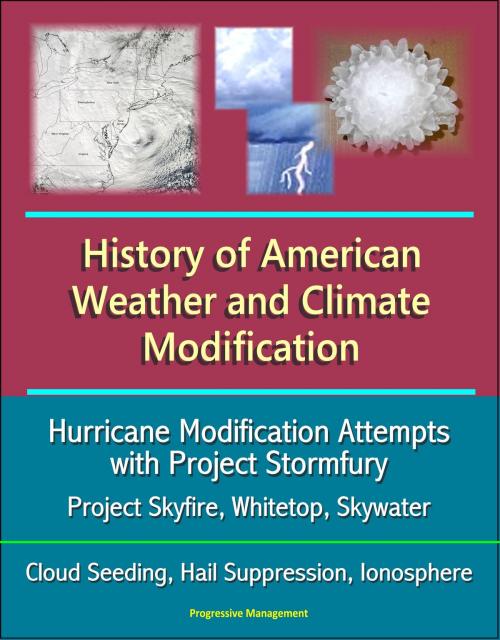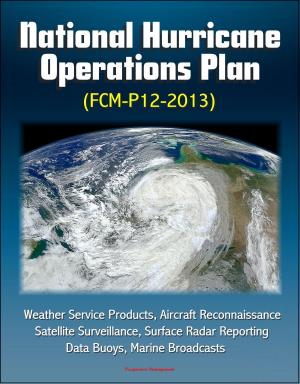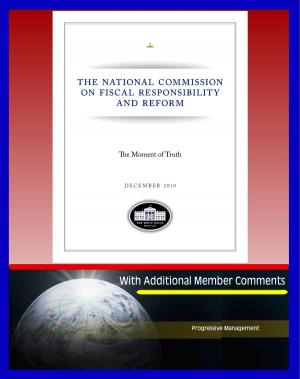History of American Weather and Climate Modification: Hurricane Modification Attempts with Project Stormfury, Project Skyfire, Whitetop, Skywater, Cloud Seeding, Hail Suppression, Ionosphere
Nonfiction, Science & Nature, Science, Other Sciences, Meteorology| Author: | Progressive Management | ISBN: | 9781310815720 |
| Publisher: | Progressive Management | Publication: | May 9, 2014 |
| Imprint: | Smashwords Edition | Language: | English |
| Author: | Progressive Management |
| ISBN: | 9781310815720 |
| Publisher: | Progressive Management |
| Publication: | May 9, 2014 |
| Imprint: | Smashwords Edition |
| Language: | English |
Ten unique government reports document the history of attempted weather and climate modification efforts, including Defense Department projections of future programs and a detailed history of Project Stormfury and related hurricane modification trials. Contents: A Recommended National Program In Weather Modification * Weather as a Force Multiplier: Owning the Weather in 2025 * Weather Modification Research and Development Policy Authorization Act of 2005 * Weather and Climate Modification: Report of the Special Commission on Weather Modification * Federal Weather Modification Efforts Need Congressional Attention * An Introduction to Weather Modification * Need for a National Weather Modification Research Program * Hurricane Modification * Project Stormfury * Hurricane Modification and Control Report (April 1971).
Can human intervention diminish the force of a hurricane? From the mid-1960s through the early 1980s NOAA actively pursued Project STORMFURY, a program of experimental hurricane modification. The general strategy was to reduce the intensity of the storm by cloud seeding. The seeding, it was argued, would stimulate the formation of a new eyewall that would surround the existing eyewall. The new eyewall would contract, strangling the old eyewall and reducing the intensity of the hurricane. However, research carried out at AOML showed clearly that these "concentric eyewalls" happened often in unmodified hurricanes, thus casting doubt on the seemingly positive results of seeding in earlier experimentation. Hurricane Luis provides an example of this behavior. Moreover, observations showed that hurricanes contain little of the supercooled water necessary for cloud seeding to work.
The American Meteorological Society policy statement on planned and inadvertent weather modification, dated October 2, 1998, indicates, "There is no sound physical hypothesis for the modification of hurricanes, tornadoes, or damaging winds in general, and no related scientific experimentation has been conducted in the past 20 years." In the absence of a sound hypothesis, no Federal agencies are presently doing, or planning, research on hurricane modification.
Some techniques besides seeding clouds that have been considered over the years include: cooling the ocean with cryogenic material or icebergs, retardation of surface evaporation with monomolecular films, changing the radiational balance in the hurricane environment by absorption of sunlight with carbon black, blowing the hurricane apart with hydrogen bombs, injecting air into the center with a huge maneuverable tube to raise the central pressure, and blowing the storm away from land with windmills. As carefully reasoned as some of these suggestions are, they all fall short of the mark because they fail to appreciate the size and power of tropical cyclones. For example, when hurricane Andrew struck South Florida in 1992, the eye and eyewall devastated a swath 20 miles wide. The heat energy released around the eye was 5,000 times the combined heat and electrical power generation of the Turkey Point nuclear power plant over which the eye passed. Better building codes, wiser land use, and more accurate forecasts seem prosaic compared with environmental mega engineering but they are a great deal cheaper and have overwhelmingly favorable cost-benefit ratios.
Ten unique government reports document the history of attempted weather and climate modification efforts, including Defense Department projections of future programs and a detailed history of Project Stormfury and related hurricane modification trials. Contents: A Recommended National Program In Weather Modification * Weather as a Force Multiplier: Owning the Weather in 2025 * Weather Modification Research and Development Policy Authorization Act of 2005 * Weather and Climate Modification: Report of the Special Commission on Weather Modification * Federal Weather Modification Efforts Need Congressional Attention * An Introduction to Weather Modification * Need for a National Weather Modification Research Program * Hurricane Modification * Project Stormfury * Hurricane Modification and Control Report (April 1971).
Can human intervention diminish the force of a hurricane? From the mid-1960s through the early 1980s NOAA actively pursued Project STORMFURY, a program of experimental hurricane modification. The general strategy was to reduce the intensity of the storm by cloud seeding. The seeding, it was argued, would stimulate the formation of a new eyewall that would surround the existing eyewall. The new eyewall would contract, strangling the old eyewall and reducing the intensity of the hurricane. However, research carried out at AOML showed clearly that these "concentric eyewalls" happened often in unmodified hurricanes, thus casting doubt on the seemingly positive results of seeding in earlier experimentation. Hurricane Luis provides an example of this behavior. Moreover, observations showed that hurricanes contain little of the supercooled water necessary for cloud seeding to work.
The American Meteorological Society policy statement on planned and inadvertent weather modification, dated October 2, 1998, indicates, "There is no sound physical hypothesis for the modification of hurricanes, tornadoes, or damaging winds in general, and no related scientific experimentation has been conducted in the past 20 years." In the absence of a sound hypothesis, no Federal agencies are presently doing, or planning, research on hurricane modification.
Some techniques besides seeding clouds that have been considered over the years include: cooling the ocean with cryogenic material or icebergs, retardation of surface evaporation with monomolecular films, changing the radiational balance in the hurricane environment by absorption of sunlight with carbon black, blowing the hurricane apart with hydrogen bombs, injecting air into the center with a huge maneuverable tube to raise the central pressure, and blowing the storm away from land with windmills. As carefully reasoned as some of these suggestions are, they all fall short of the mark because they fail to appreciate the size and power of tropical cyclones. For example, when hurricane Andrew struck South Florida in 1992, the eye and eyewall devastated a swath 20 miles wide. The heat energy released around the eye was 5,000 times the combined heat and electrical power generation of the Turkey Point nuclear power plant over which the eye passed. Better building codes, wiser land use, and more accurate forecasts seem prosaic compared with environmental mega engineering but they are a great deal cheaper and have overwhelmingly favorable cost-benefit ratios.















